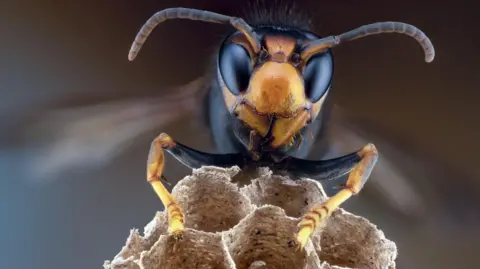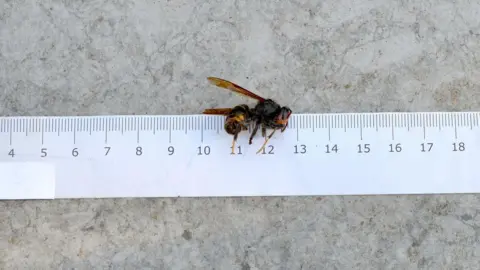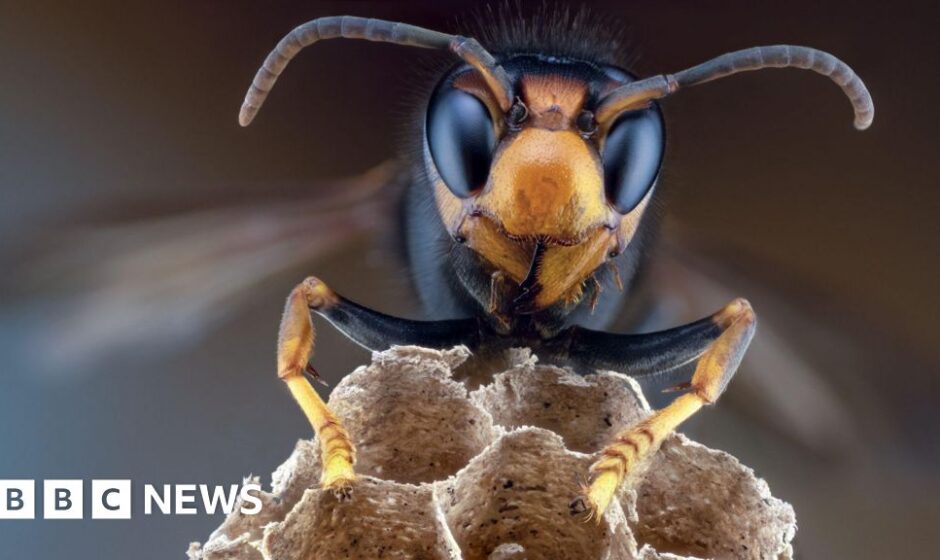 Getty Images
Getty ImagesThe public is being urged to continue to be vigilant following further sightings of Asian hornets in Northern Ireland.
An Asian hornet was captured in the Dundonald area of Belfast on Friday 10 October by a member of the public.
The further sightings, also in the Dundonald area, were confirmed by the Northern Ireland Environment Agency (NIEA) on Wednesday.
The NIEA said this suggests the existence of a nest.
The NIEA said officials are now moving to employ “track and trace” methods to establish the location of, and remove, any potential nest in the area.
What is an Asian hornet?
- The Asian Hornet originated from east Asia and was first recorded in France in 2004
- The species is active between April and November, but especially in August and September
- The insect is about 2cm long, mostly black and brown with an orange face, orange tail and yellow legs
- The yellow-legged hornet can be confused with the native European hornet, which is larger and mostly pale yellow with black stripes.
- Their nests are often found in hedges or near to the ground
- The hornets feed on more than 1,000 species including honey bees, bumble bees, butterflies and beetles
Individual hornets and nests have been increasingly recorded in southern counties of England, while two nests were found and destroyed in County Cork earlier this summer.
 Getty Images
Getty ImagesSpeaking following the discovery of the initial Asian hornet in Dundonald, the Environment Minister Andrew Muir said: “This is a harmful species that I do not wish to see becoming established in Northern Ireland as it presents a serious threat to both biosecurity and local ecology, particularly valuable pollinating insects.”
The NIEA said the “public is urged to be vigilant and report any suspect insects, ideally with a photograph,” to the Department of Agriculture, Environment and Rural Affairs.
#Asian #hornets #sightings #confirmed #Belfast



